VERY RARE! WWII 1944 Operation Reckless Task Force Derorie River - New Guinea "SPECIAL INVASION MAP" Assault on Hollandia and Sentani Airfields

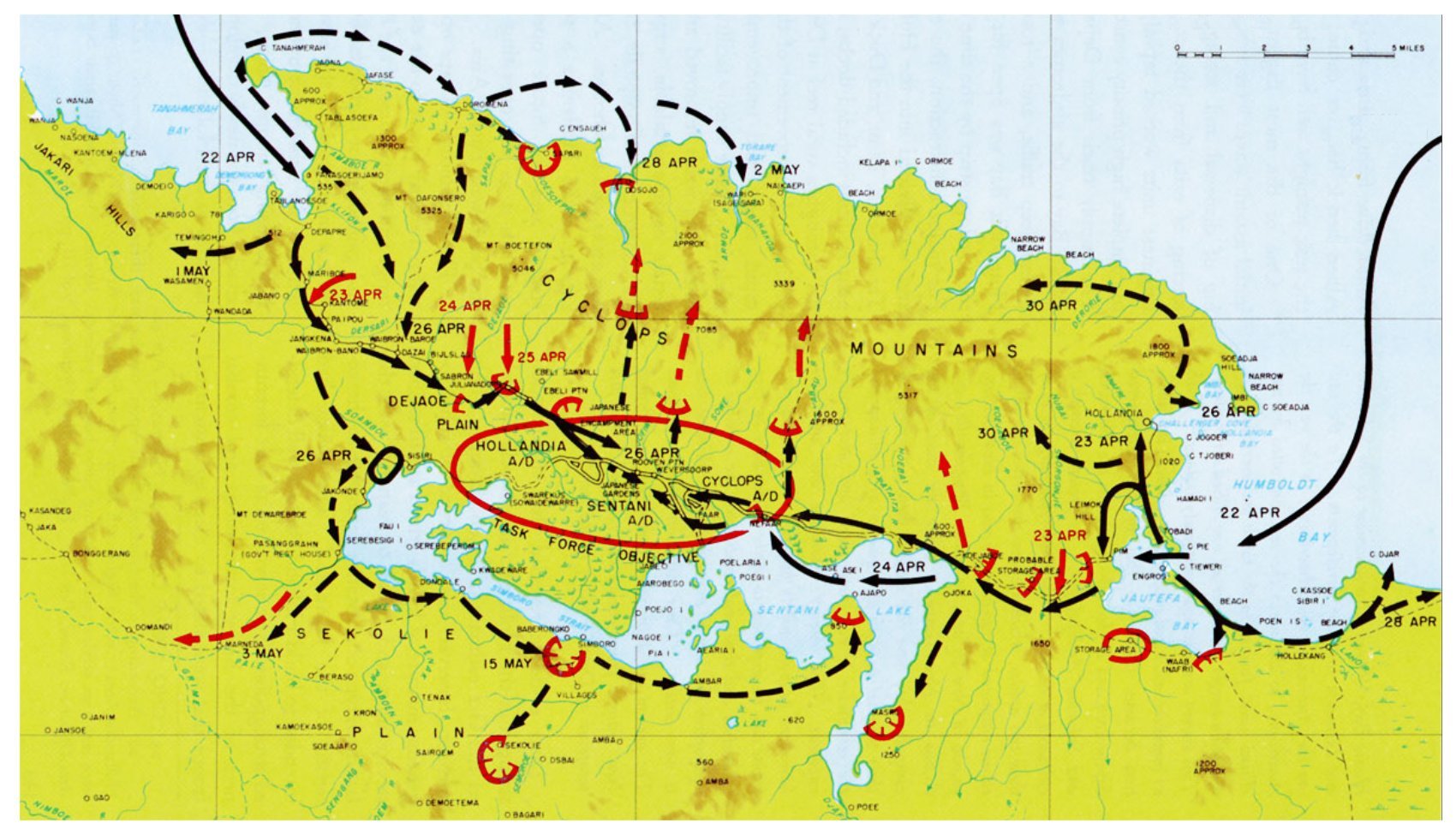

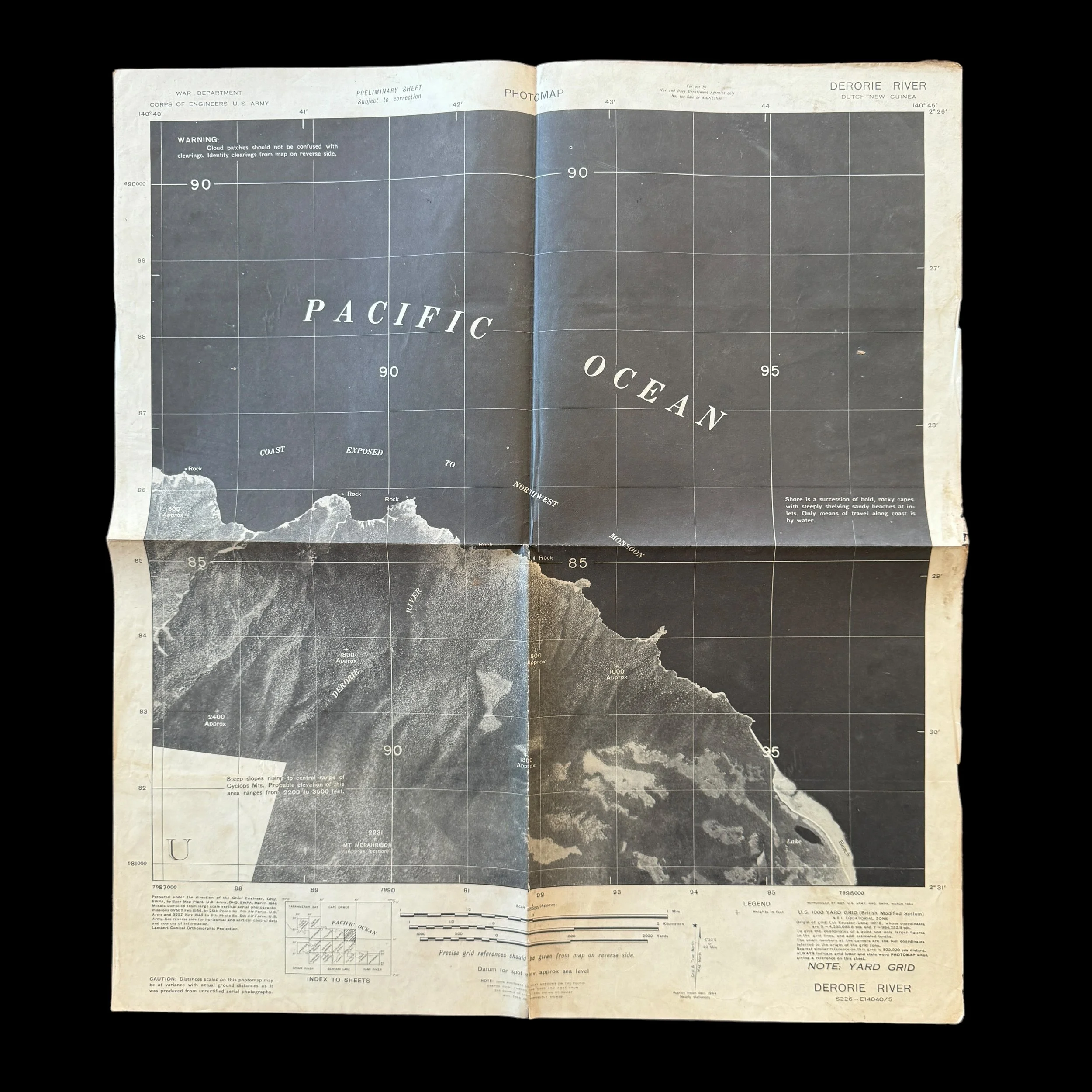


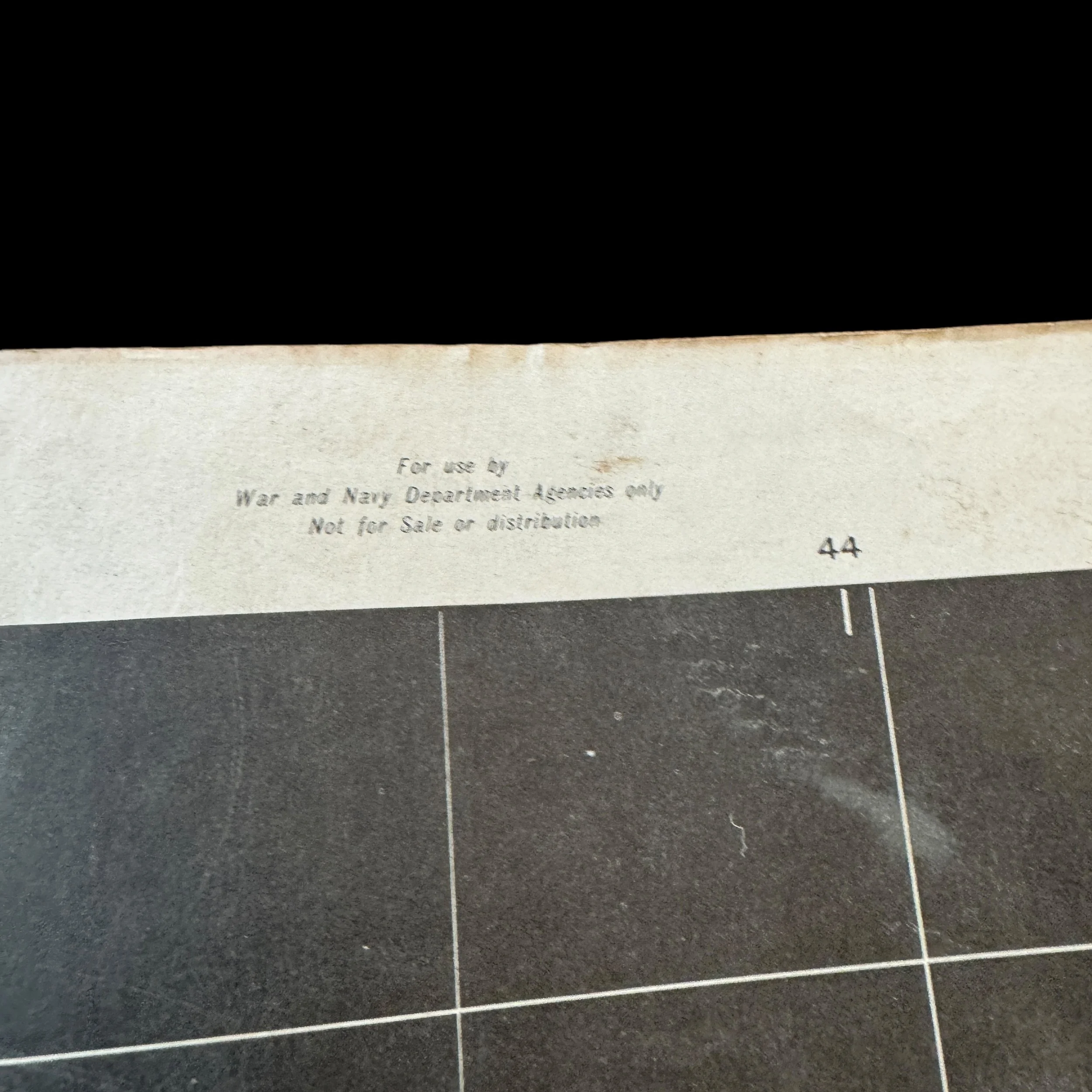
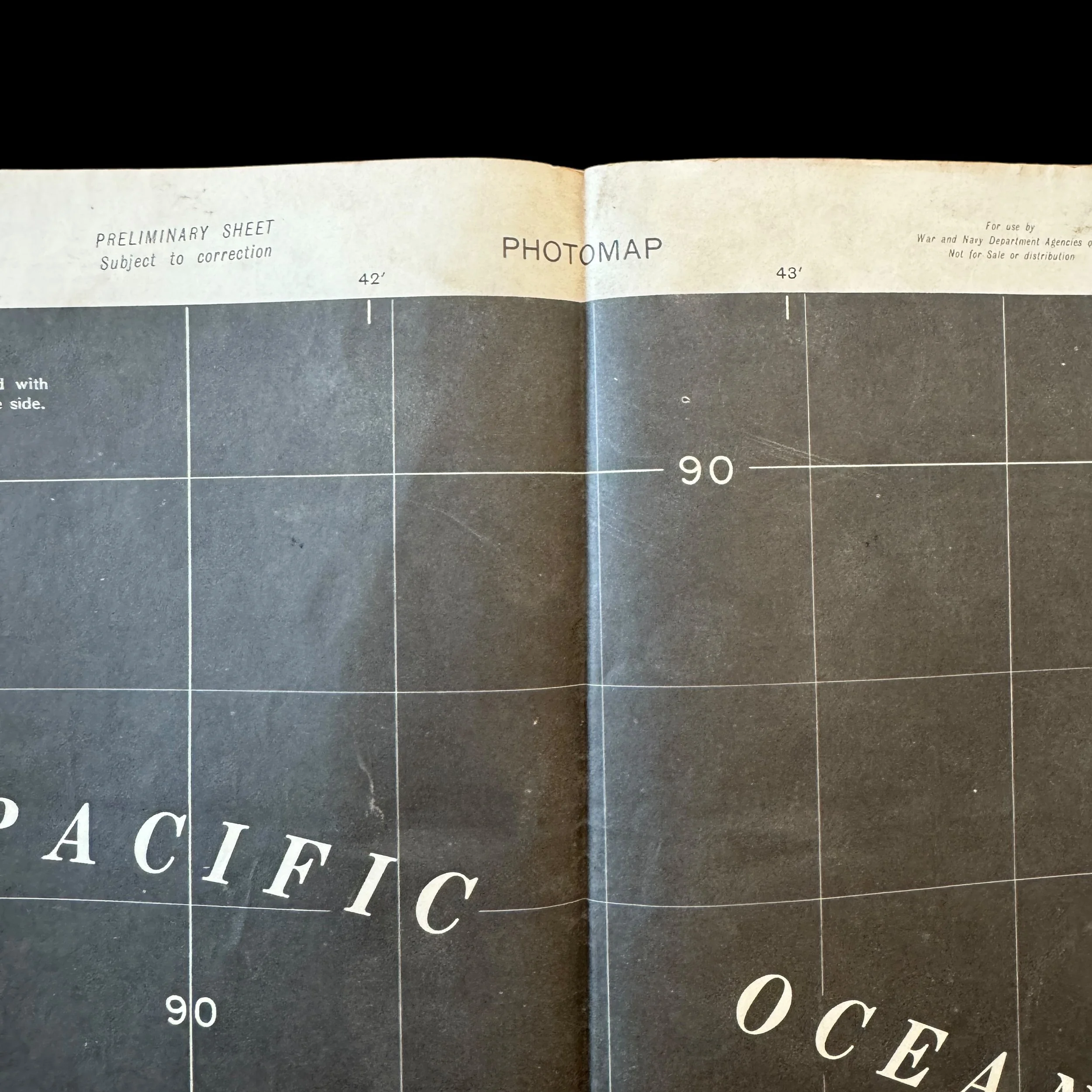



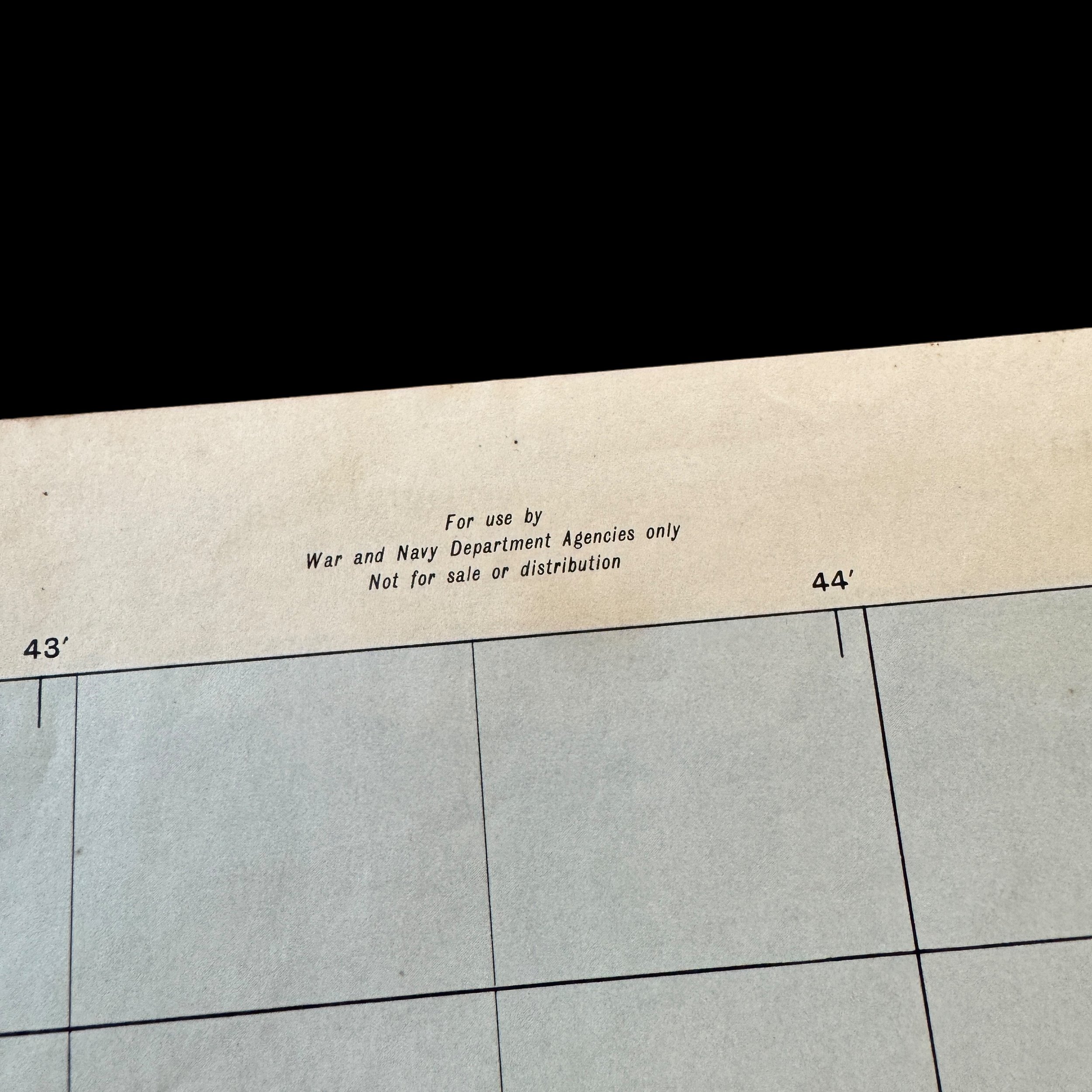
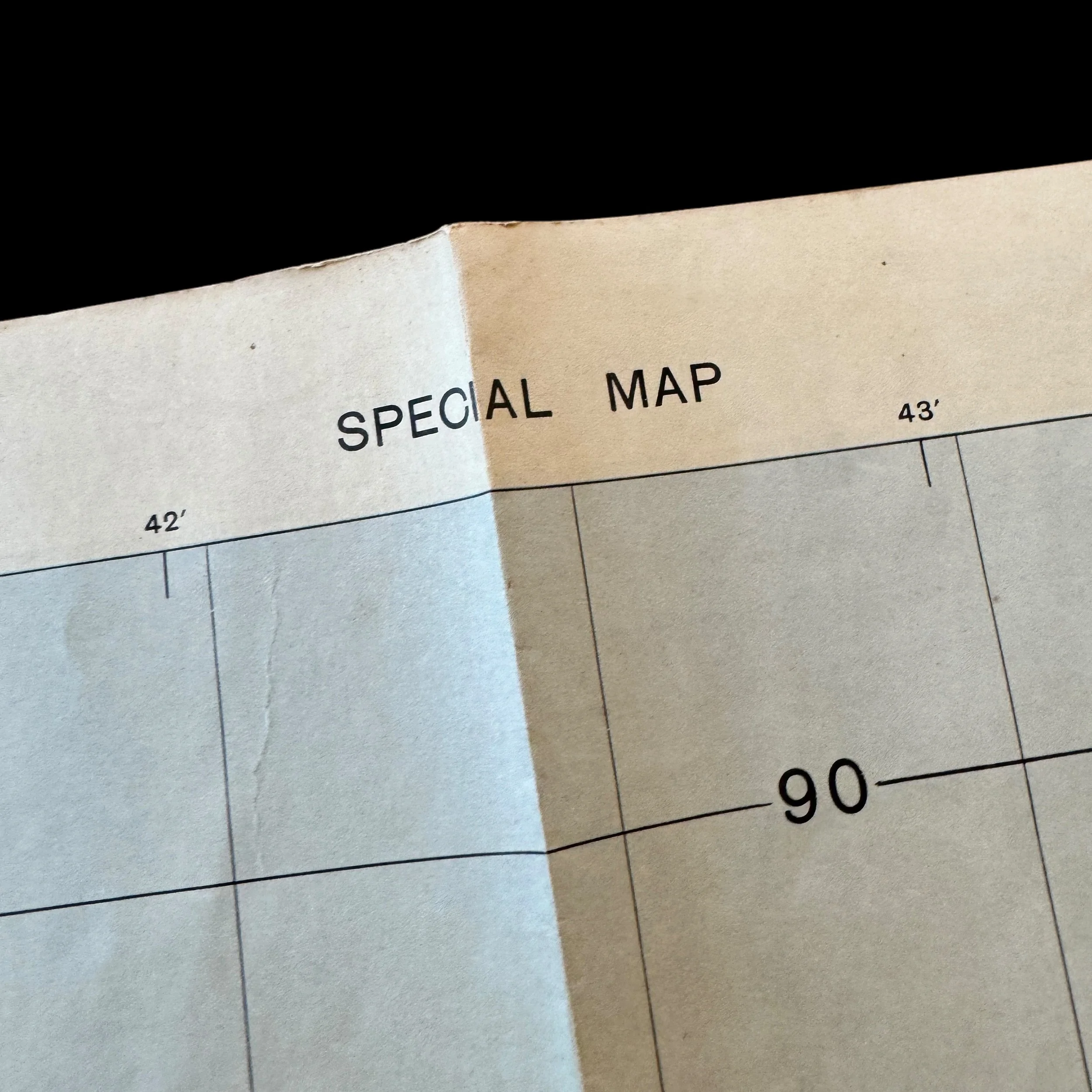



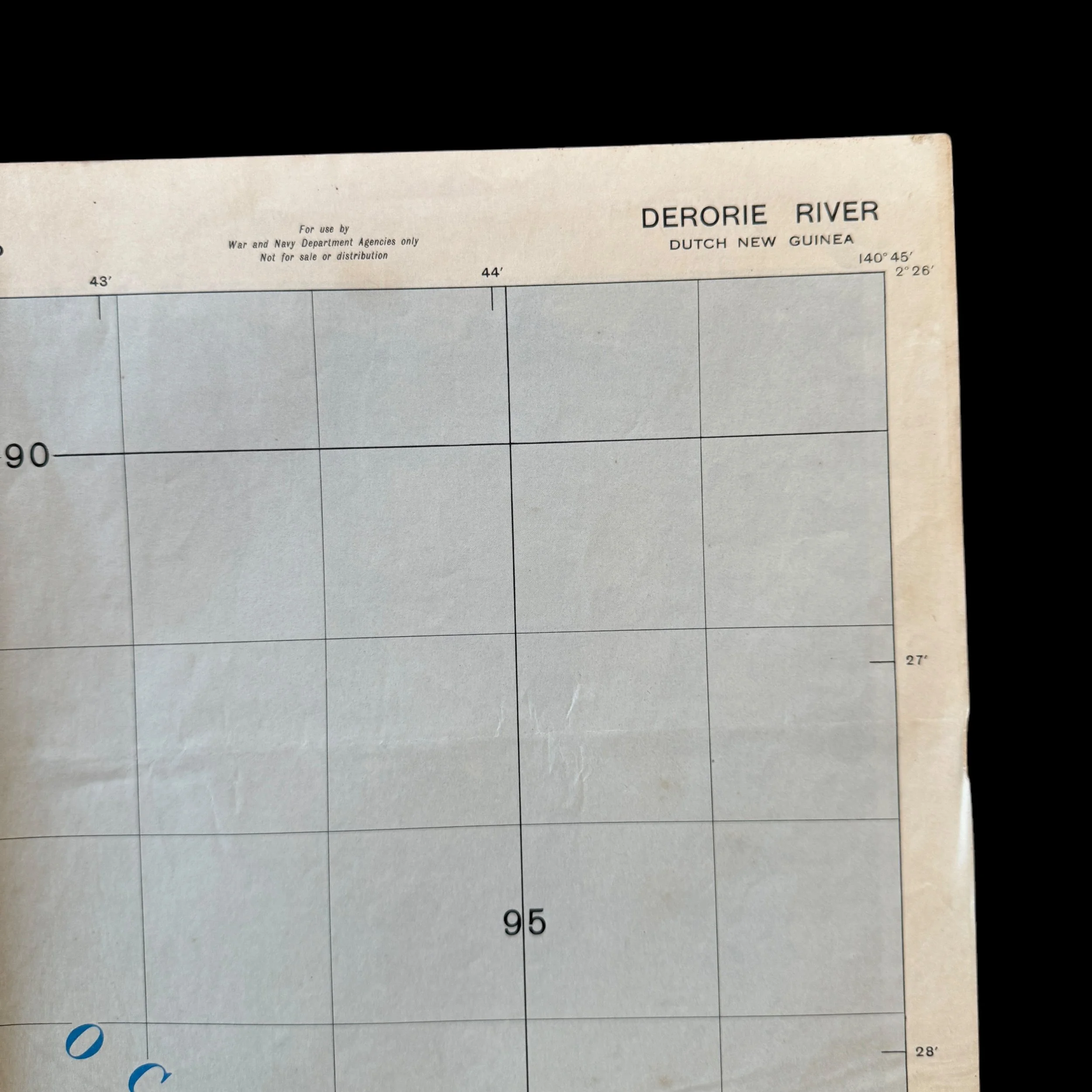
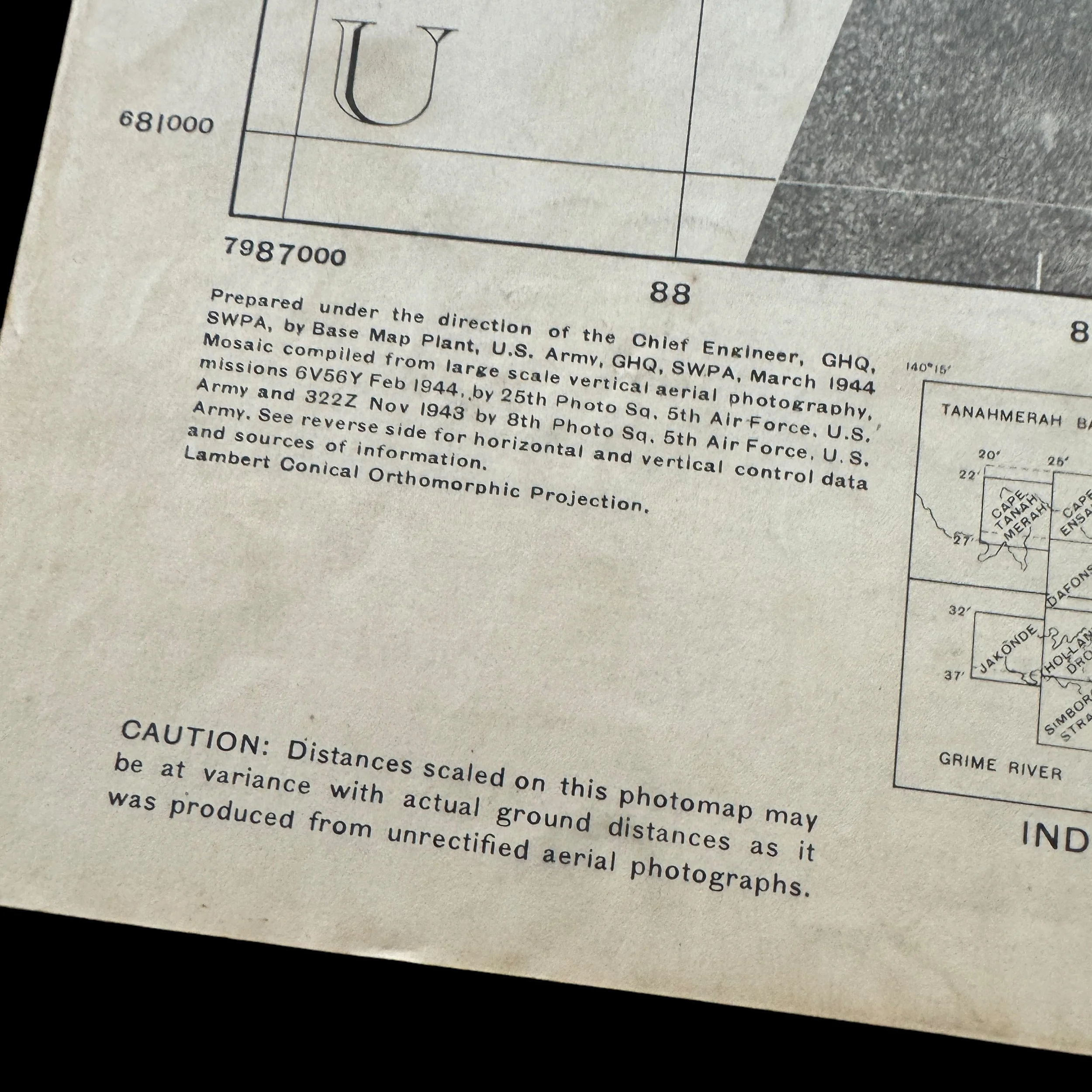




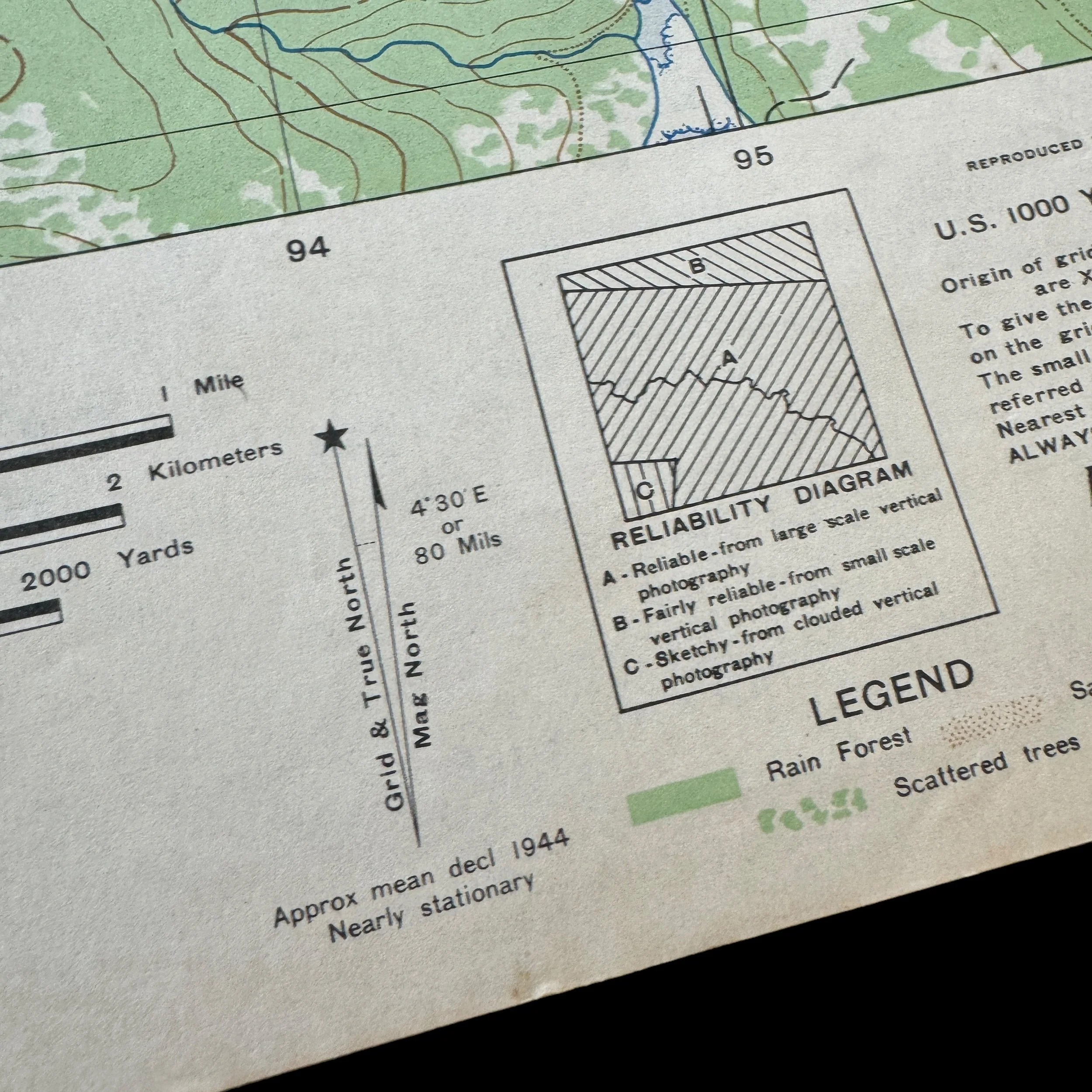

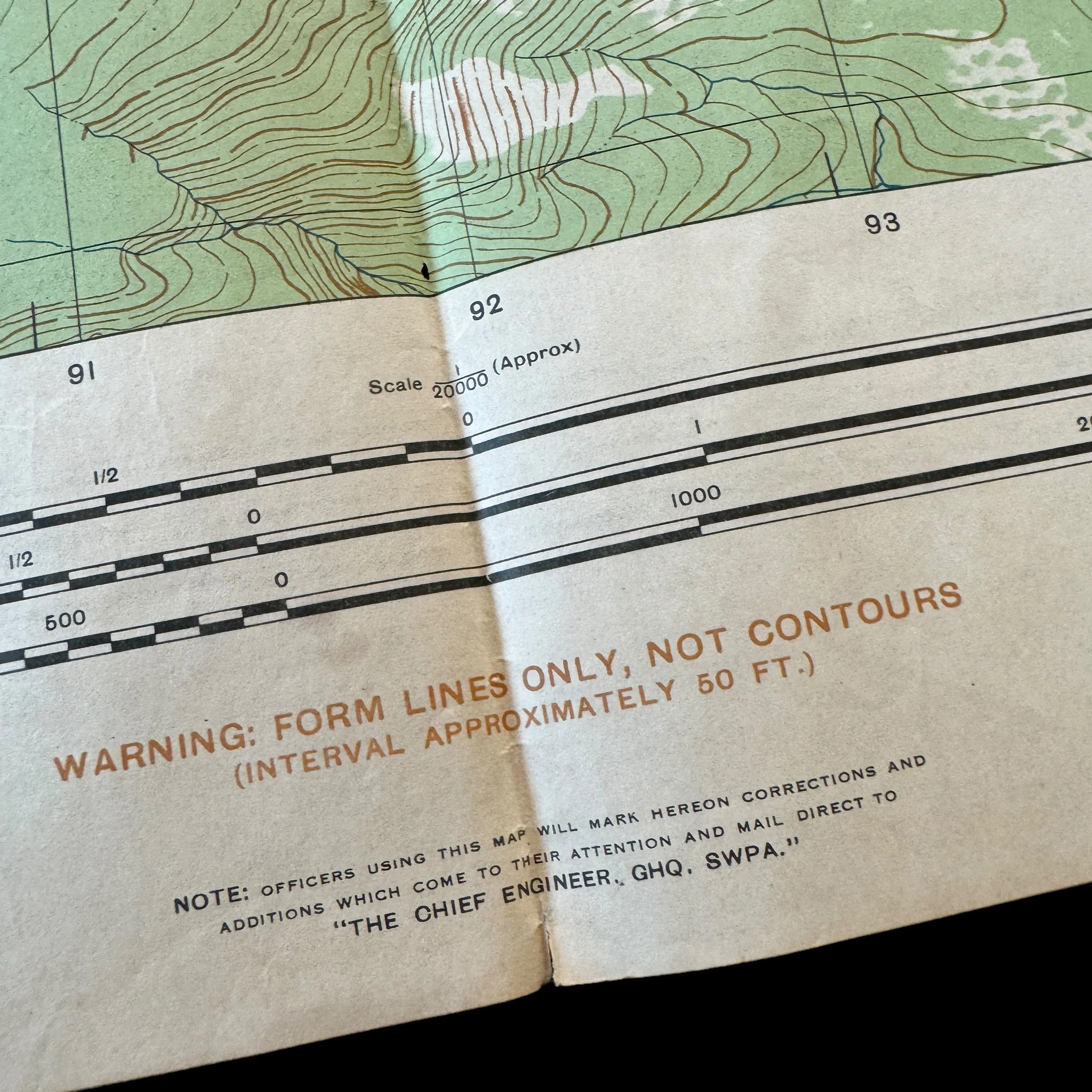


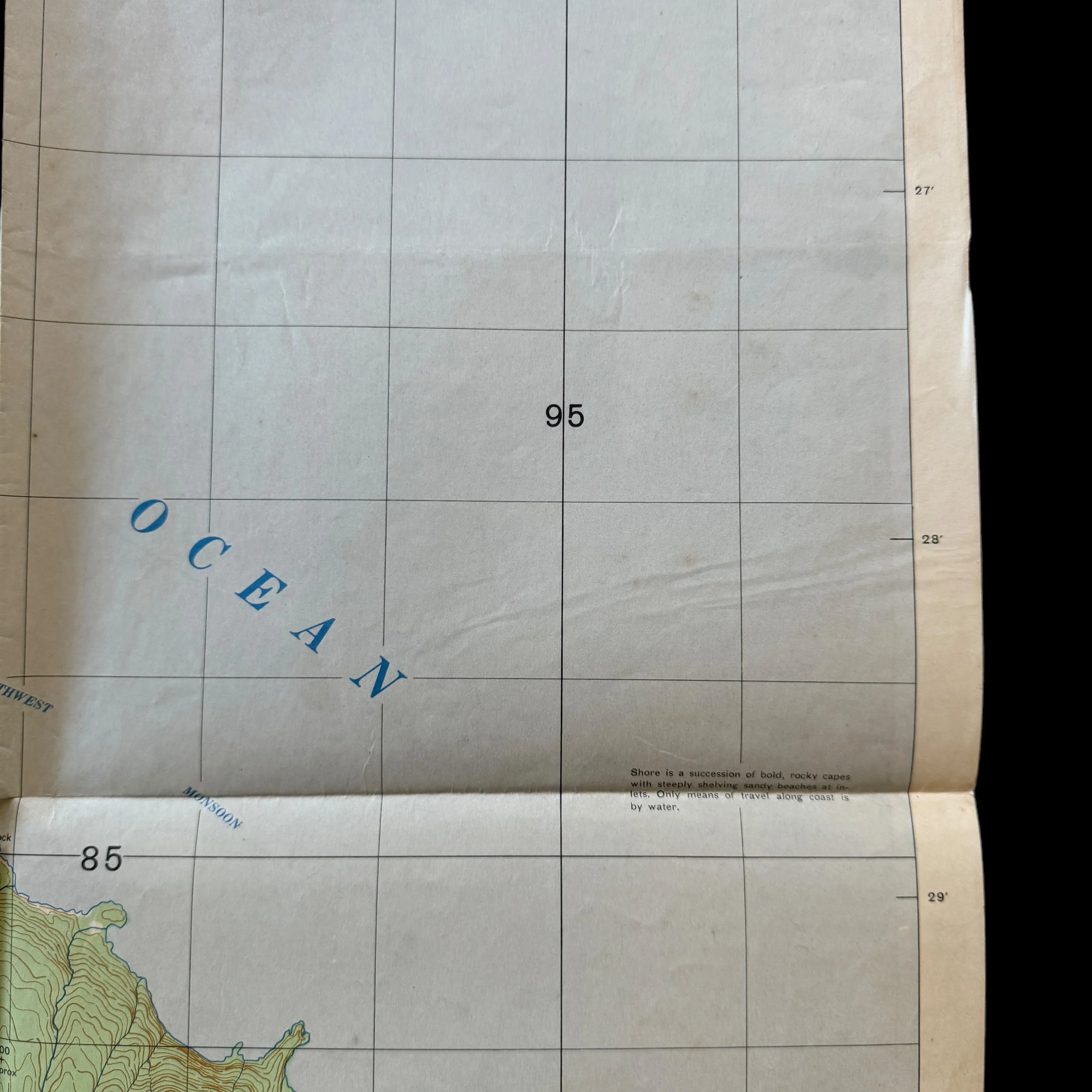
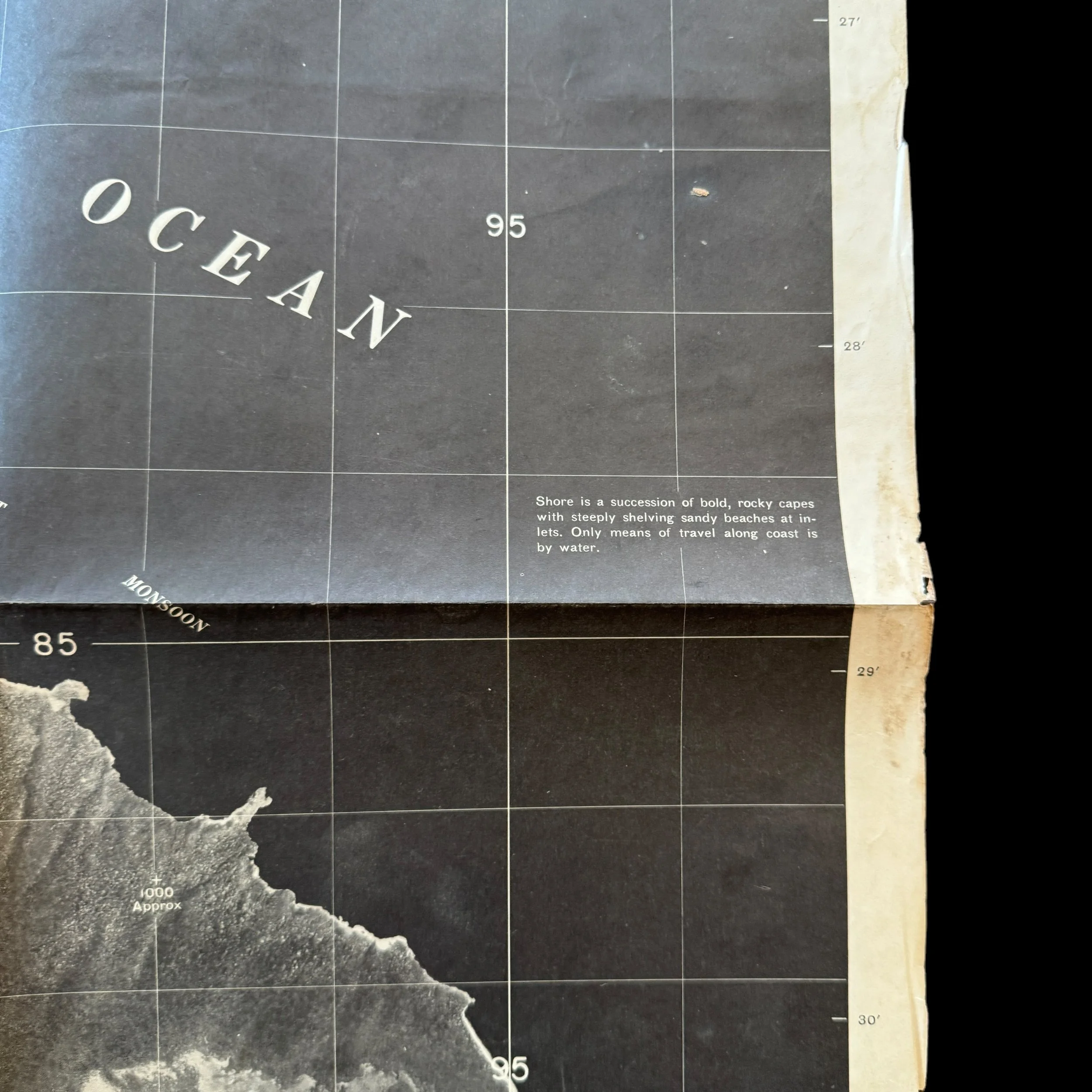


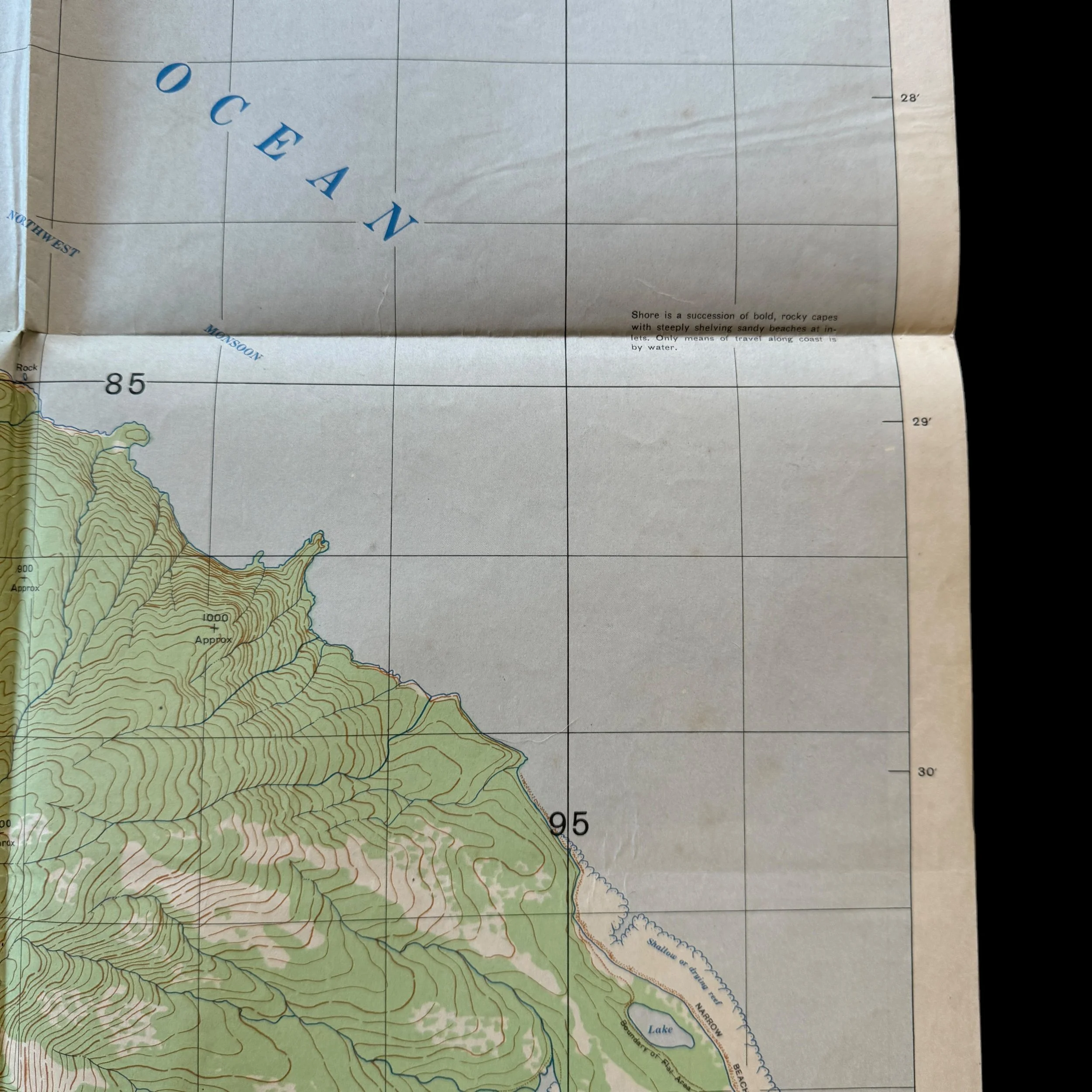
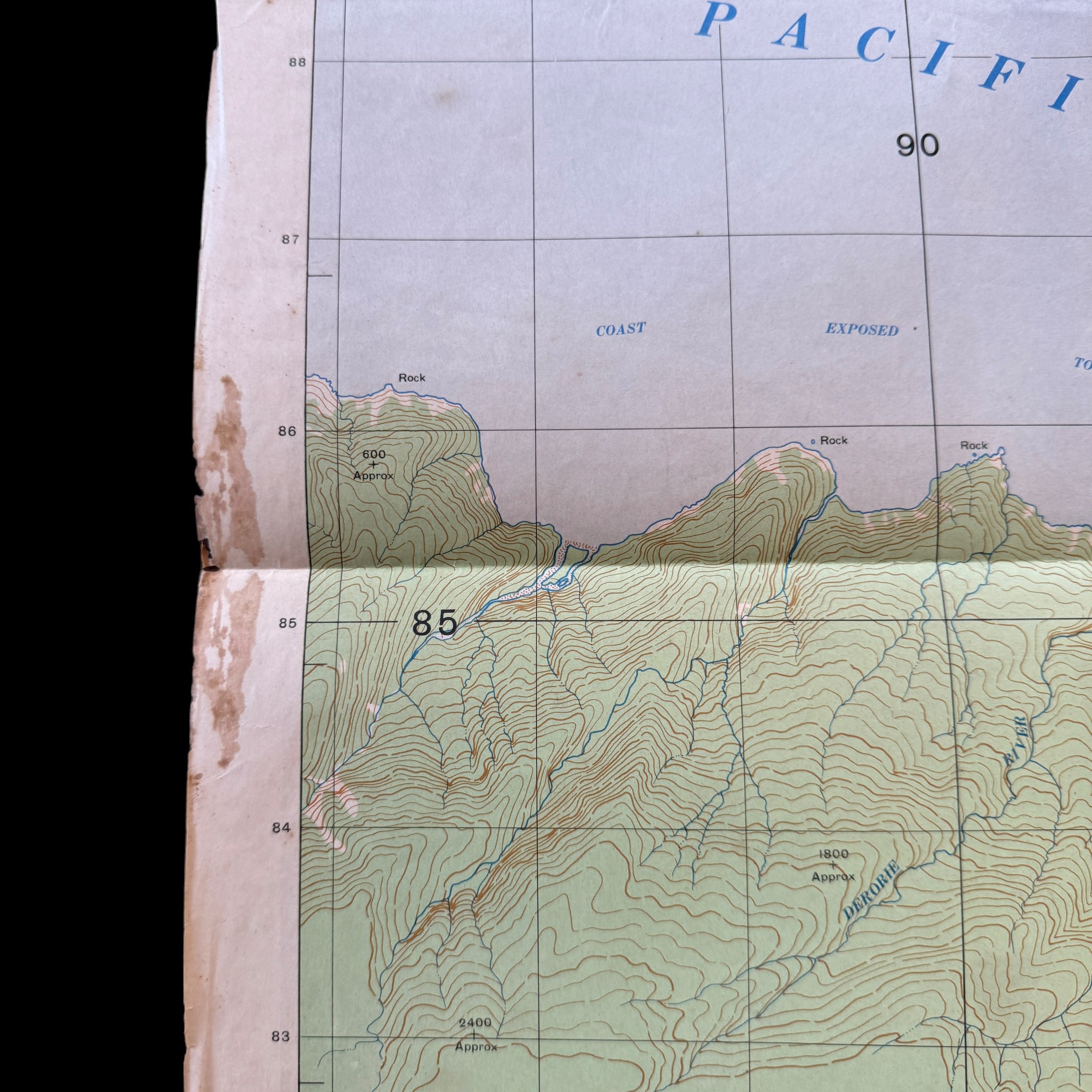
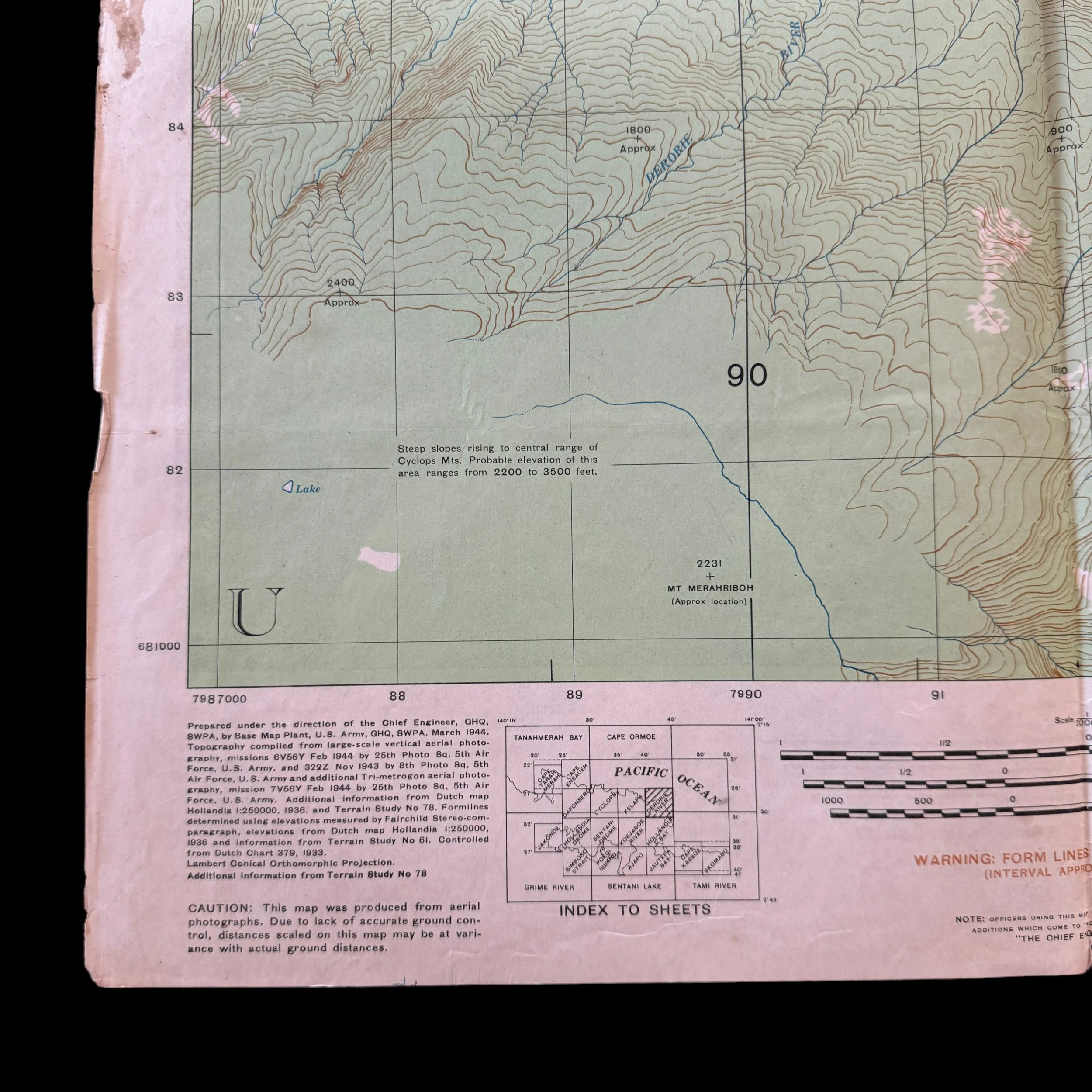




VERY RARE! WWII 1944 Operation Reckless Task Force Derorie River - New Guinea "SPECIAL INVASION MAP" Assault on Hollandia and Sentani Airfields
Comes with a hand-signed C.O.A.
Size: 20 x 22 inches
This incredibly rare and museum-grade WWII artifact is an original and heavily used 1944 dated combat operations map used during Operation Reckless and the Allied Campaign in Hollandia and Sentani, New Guinea (Pacific Theater). What makes this New Guinea invasion map so rare is that this was printed in March 1944 (one month before the Operation Reckless D-Day landing assault on the Hollandia area in April 1944. Prepared under the direction of the Chief Engineer this extremely rare double-side Hollandia New Guinea amphibious invasion map and rare ‘AERIAL SUPPORT PHOTO’ map was used in support of the Operation Reckless Task Force assault on the Japanese held airfields around the Hollandia Airfield and Sentani Airfield. The U.S. 8th Photo Squadron, 5th Air Force constructed this map from large-scale vertical area photograph missions. This “SPECIAL MAP” print also features a rare ‘PHOTO MAP’ on the backside showing a realistic view of the New Guinea terrain. These backside special ‘PHOTO MAPS’ are not common and are generally reserved for special divisions and operations.
Operation Reckless: The Battle for Hollandia and Sentani Dromes in New Guinea
World War II, the global conflict that lasted from 1939 to 1945, was characterized by numerous critical battles and operations that shaped the course of history. One such significant military campaign was Operation Reckless, a strategic Allied operation aimed at capturing the Japanese-held territory of Hollandia (currently Jayapura) in New Guinea. This operation, conducted in April 1944, was pivotal in the Allies' Pacific campaign. It involved the coordination of air, land, and sea forces, and its success marked a turning point in the fight against Japanese forces in the region.
New Guinea, the world's second-largest island, was a key strategic location in the Pacific theater of World War II. Its dense jungles, mountainous terrain, and numerous rivers posed significant challenges for both Allied and Japanese forces. The Japanese had established strong defensive positions throughout the island, using it as a base to launch attacks and control sea routes.
The Allies, under the leadership of General Douglas MacArthur, recognized the importance of New Guinea in their strategy to advance toward the Philippines and eventually Japan. The capture of Hollandia, with its two key airfields at Sentani and Tami, would provide a vital base for air operations and a springboard for further advances.
Planning and Execution of Operation Reckless
Operation Reckless was meticulously planned to ensure the element of surprise and minimize casualties. The primary objective was to seize the airfields at Hollandia and Sentani, which were crucial for establishing air superiority in the region. The operation involved a coordinated effort between the U.S. Sixth Army, commanded by Lieutenant General Walter Krueger, and the Seventh Fleet, commanded by Vice Admiral Thomas C. Kinkaid.
On April 22, 1944, the operation commenced with a series of amphibious landings at Tanahmerah Bay and Humboldt Bay. These landings were supported by extensive naval bombardments and air strikes, which targeted Japanese defenses and supply lines. The Derorie River, flowing through the region, played a significant role in the logistical aspects of the operation, providing a natural route for movement and resupply.
The landings were executed with precision, and despite the challenging terrain and the presence of Japanese forces, the Allied troops made rapid progress. The surprise and intensity of the assault overwhelmed the Japanese defenders, who were forced to retreat into the interior of the island.
The Battle for Sentani and Hollandia
Once ashore, the Allied forces quickly advanced toward the Sentani and Hollandia airfields. The terrain was difficult, characterized by dense jungle, steep ridges, and numerous rivers and streams. The Derorie River, in particular, served as both an obstacle and a critical resource, providing water and a natural pathway through the jungle.
The Japanese forces, although caught off guard, put up a fierce resistance. They had constructed a network of defensive positions, including bunkers and fortified emplacements, to protect the airfields. However, the relentless advance of the Allied troops, combined with continuous air and artillery support, gradually wore down the Japanese defenses.
By April 26, the Allies had successfully captured the Sentani airfield, followed by the Hollandia airfield shortly thereafter. The capture of these airfields was a significant blow to the Japanese, as it deprived them of vital air support and disrupted their supply lines. The Allies immediately began constructing new runways and facilities, turning Hollandia into a major airbase that would support future operations in the region.
Aftermath and Significance
The success of Operation Reckless had far-reaching consequences for the Pacific campaign. The capture of Hollandia and Sentani provided the Allies with a strategic base for launching further operations against Japanese-held territories in New Guinea and the surrounding islands. It also allowed for increased air reconnaissance and bombing missions, which further weakened Japanese positions.
The operation demonstrated the effectiveness of coordinated amphibious assaults and the importance of air superiority in modern warfare. It also highlighted the challenges posed by the harsh and unforgiving terrain of New Guinea, which tested the resilience and adaptability of Allied forces.
In the broader context of World War II, Operation Reckless marked a turning point in the Allies' push toward Japan. It paved the way for subsequent operations, including the liberation of the Philippines and the eventual invasion of Japan. The lessons learned and the experience gained during this operation would prove invaluable in the final stages of the war.
Operation Reckless was a crucial campaign in the Pacific theater of World War II. The successful capture of Hollandia and Sentani airfields not only dealt a significant blow to Japanese forces but also provided the Allies with a strategic base for future operations. The operation showcased the importance of coordinated assaults, air superiority, and the ability to adapt to challenging terrain.
The area around the Derorie River, with its natural barriers and resources, played a vital role in the logistics and movement of troops. The resilience and determination of the Allied forces, combined with meticulous planning and execution, ensured the success of Operation Reckless and contributed to the eventual victory in the Pacific.
In remembering this operation, we honor the bravery and sacrifice of those who fought in the harsh jungles of New Guinea and recognize the strategic importance of their achievements in the broader context of World War II.